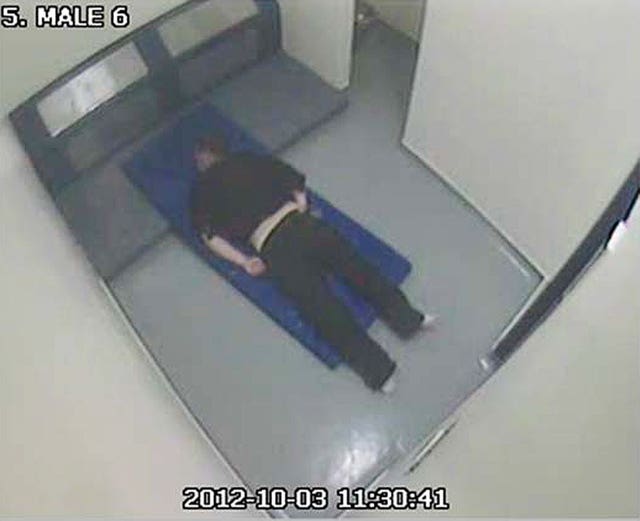Force ‘failed to properly risk assess belt used on man’s face in custody’
Church caretaker Thomas Orchard died in hospital after collapsing in his police cell in October 2012.

Devon and Cornwall Police failed to properly assess a restraint belt later placed across the face of a man before he collapsed in custody, a court heard.
Thomas Orchard, 32, died in hospital seven days after being arrested and taken to Heavitree Road police station in Exeter, Devon, in October 2012.
During his detention Mr Orchard, who had paranoid schizophrenia, was restrained and an emergency response belt (ERB) was placed across his face.
The restraints were removed and the church caretaker was left in a locked cell, where he lay apparently motionless for 12 minutes before custody staff re-entered and started CPR.

The charge alleged that the force failed to ensure non-employees, including Mr Orchard, were not exposed to risks in connection with the ERB.
A trial of issue is taking place at Bristol Crown Court before Judge Julian Lambert to resolve a series of disputed matters, including whether the use of the belt was a contributory factor in Mr Orchard’s death.
The force will be sentenced next month.
Mark Heywood QC, prosecuting, told Judge Lambert that the force made a number of failings in the way it procured, assessed, reviewed and trained staff how to use the device.
He said the ERB was first approved for use by the force as a limb restraint in a custody setting in 2002 but was being “in practice” used as a spit or bite guard within months.
“It doesn’t appear that any risk assessment was carried out for this particular use of the ERB,” Mr Heywood told the judge.
“This is a fundamental failing and may or is capable of explaining all the other problems that follow.
“Without that yardstick to alert to the hazard, it is difficult to understand how the kind of risk can be appreciated, how its control can be implemented and how safeguards to prevent it occurring can be adopted.”
After Mr Orchard’s death, laboratory tests were carried out on the US-made webbing belt.

The material restricted airflow more than tea towels, overalls, a handkerchief and dust masks.
Placing the ERB over a person’s face from forehead to chin with limited pressure would “to an extent” obstruct access to airflow, Mr Heywood said.
In a 2001 report, Dr Graham Cook raised concerns that the device could partially obstruct a person’s airway if used about the head.
This report was referenced in a memo written by a Devon and Cornwall Police custody training officer in April 2002, as well as other documents about the ERB.
A training manual for the device included instructions on how to use it about the head to prevent spitting or biting.
Mr Heywood said the force only initially approved the belt for use as a limb restraint but within months it was adopted as a spit or bite guard.

In February 2003, the custody training officer wrote an email saying he had demonstrated the “hooding” capabilities of the ERB to a colleague.
“The reference to the word ‘hooding’ is of some significance because historically it has been avoided by the security services and police forces of this country,” Mr Heywood said.
The force’s policy for the belt was updated in April 2003, stating it could be “held loosely about the head” to deal with head butting, biting or spitting.
Mr Heywood said there was a failure to identify that the belt had not been laboratory tested, there were inadequate reviews and the force failed to give “adequate consideration” to available medical information.
There was also a failure to investigate the medical implications of the proposed use, he told the judge.
A generic risk assessment drawn up by the force did not “contemplate use about the head”, Mr Heywood said.
This was updated on October 10 2012, the day Mr Orchard died in hospital.
Mr Heywood described the training given to staff using the ERB as “inconsistent and as a result inadequate”.
The trial of issue, due to last up to four days, continues.





